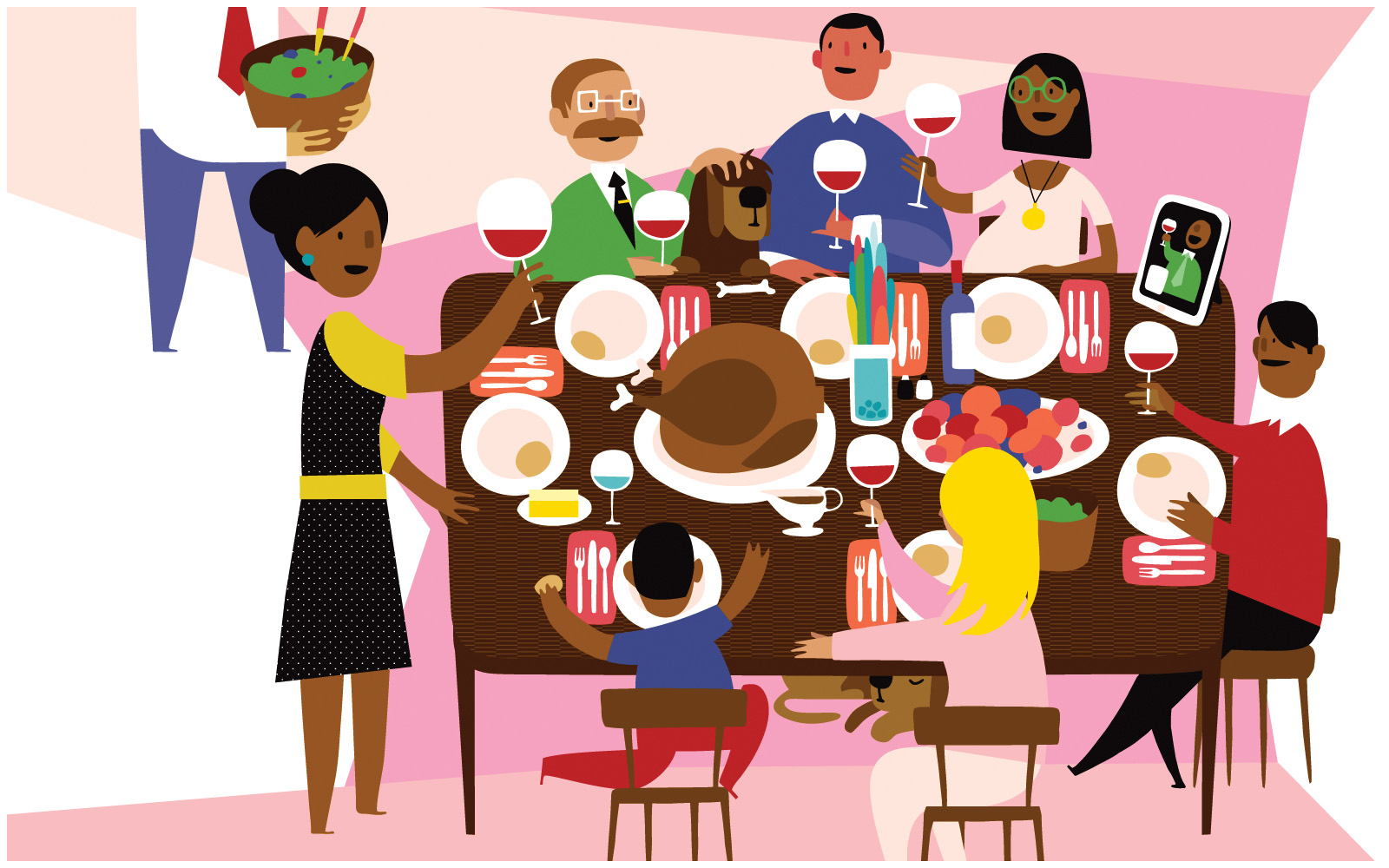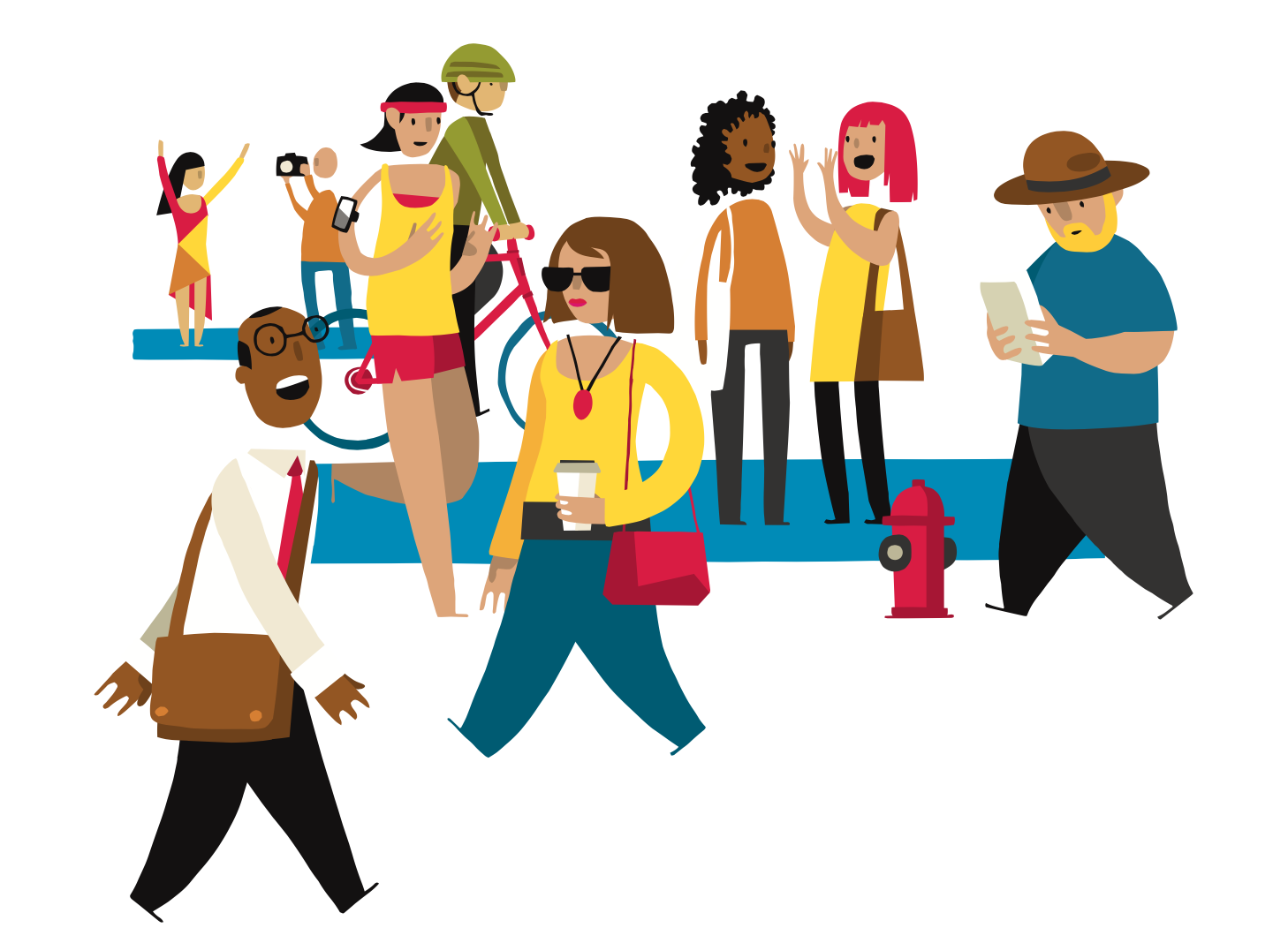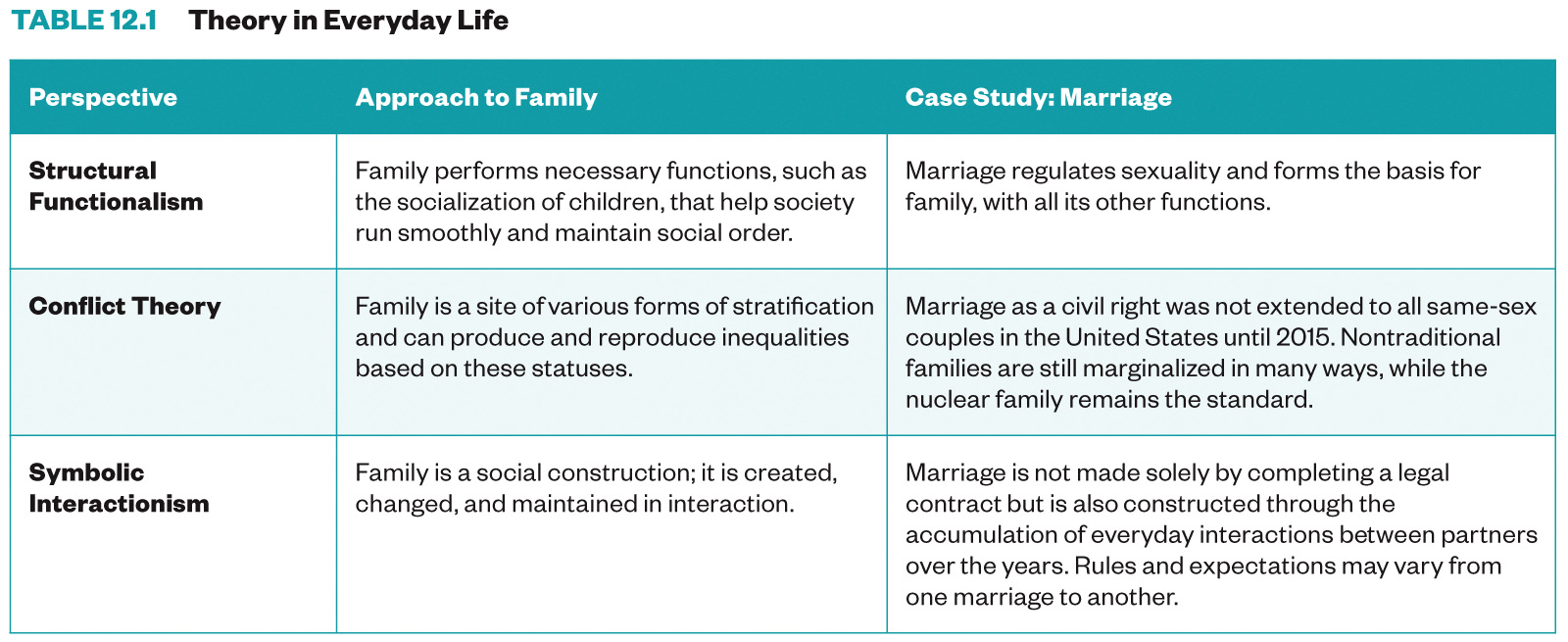
Families and Relationships¶
In this lesson, we examine society’s most fundamental social group—the family. Yet what makes a family is subject to debate. Sociology doesn’t define a family by who its members are but by what they do, how they relate to one another, and their relationship to the larger society. You will probably see some of your own family’s story in these discussions. We’ll look at the dynamic diversity of family forms in the contemporary United States, the functions of the family for society, the hierarchies of inequality that shape family life, the work that gets done by and in families, the kinds of troubles families experience, and the political and cultural controversies that affect families. You will learn that when it comes to family life, change is the only constant.
Learning Objectives¶
By the end of this lesson, you will be able to:
Describe society’s current understanding of family and recognize change in marriage and family patterns.
Discuss the social impact of changing family structures.
Analyze health benefits associated with marriage.
Deadlines¶
Be sure to hand these in before the deadline
InQuizitive Chapter Set 12 (Thursday at 9:30am)
Marriage case (Sunday at 10:00pm)
Families on TV Application
Film reflection (Sunday at 10:00pm)
Questions¶
If you have any questions at all about what you are supposed to do on this lesson, please remember I am here to help. Reach out any time so I can support your success.
Post it in the Slack #questions channel!
Signup for virtual office hours!
Email me or your TA.
Lesson Keywords¶
marriage
family
extended family
nuclear family
patriarchal & companionship family types
family historical trends
kin
fictive kin
Homogamy
endogamy
exogamy
Propinquity
antimiscegenation
cohabitation
instrumental & expressive tasks
second shift


